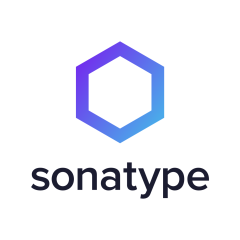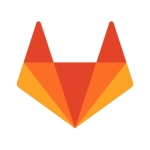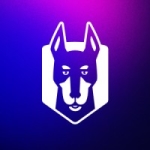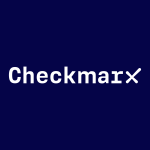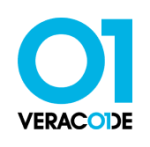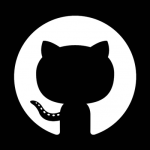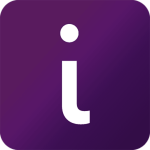What is our primary use case?
We use Nexus as a local repository of both JavaScript and Java components, and we're starting to look at Python. We also connected up to the Nexus Firewall, so that new components that are proxied are looked at to see if they have malicious components or if they are components without vulnerabilities. We're able to establish policies about whether we want to allow those or quarantine them.
Our main use case for IQ Server is to scan software builds for components with existing vulnerabilities and malicious components. We're working to drive down our technical debt due to components with known issues, and it's been helpful. We're still expanding the program to different software languages. We started with Java and then extended the JavaScript. We want to extend to Python, but we're not quite there yet. We don't have too many Python users, so that's less of a priority.
How has it helped my organization?
It's been pretty good. I'm the one who has to un-quarantine things, but the false-positive rate is not too bad, or else I'd be doing that all day. From that point of view it's been good.
The solution enables us to manage and secure the component part of our software supply chain. That is done between the policies, their data, and configuring. You have to make sure everybody's actually pointing to the repo. We started talking about blocking public repos from within the networks, so that would force people to go through the solution, but we haven't quite gotten there yet. However, we have definitely have a lot of people going through the repo. We can see how many components are cached and how many are quarantined. We have definitely had 1,000 or more components quarantined during our use of the product. That's all technical debt we would have accrued if we hadn't been using it.
What is most valuable?
We really like the Nexus Firewall. There are increasing threats from npm, rogue components, and we've been able to leverage protection there. We also really like being able to know which of our apps has known vulnerabilities.
Specifically features that have been good include
- the email notifications
- the API, which has been good to work with for reporting, because we have some downstream reporting requirements
- that it's been really user-friendly to work with.
Generally speaking, the configuration of all the tools is pretty good; the admin screens are good.
We have been able to use the API for some Excel-based reports to compare how many of our application deployments were covered by scans, and to do charts on that. That has been good and worked really well.
The default policies are also good. We deviated a little bit from those, but we have mostly used them, and they have been good. They provide us with the flexibility that we need and probably more flexibility than we need.
It has brought open source intelligence and policy enforcement across our SDLC. We have policies and SLAs that say, for example, critical findings have to be fixed within 90 days, and "high" findings have to be fixed within 120 days. That's tracked and reported on. We use the API to do some downstream reporting into some executive dashboards and when executives see red and orange they don't like it, and things get done. We've also made it part of our standards to say no components with existing vulnerabilities. Enforcing those standards is integrated into our software development life cycle.
Sonatype also blocks undesirable open source components. That is also done through policies that you can set, and configuration of the repo.
What needs improvement?
The integration is one sore spot, because when we first bought the tool they said JavaScript wasn't really part of the IDE integration, but it was on the roadmap. I followed up on that, and they said, "Oh, you can submit an idea on our idea site to have that added." The sales team said it was already in the pipeline, but it was actually not in the pipeline.
Overall it's good, but it would be good for our JavaScript front-end developers to have that IDE integration for their libraries. Right now, they don't, and I'm told by my Sonatype support rep that I need to submit an idea, from which they will submit a feature request. I was told it was already in the pipeline, so that was one strike against sales. Everything else has been pretty good.
Also, when Nexus Firewall blocks a component, it doesn't really give us a message that tells us where to go; at least it doesn't in our setup. I have to tell all the users, "Here's the URL where you can go to look up why Firewall is blocking your stuff. And that is odd because when it finishes a scan, the scan results give you the URL. But when you get blocked by Firewall, it doesn't give you the URL where you can go look that up. You can definitely work around that, but it's a bit strange. It's almost like something they forgot to include.
For how long have I used the solution?
I've been using Sonatype Nexus Lifecycle since October of 2019.
What do I think about the stability of the solution?
We've only had the server go down one time in about two years, so that's good.
What do I think about the scalability of the solution?
The scalability is fine, as far as I can tell. We only have so many developers, and haven't really grown our development teams at all in the past few years. We have about 200 users of Sonatype who are either developers or application security or myself as senior architect. We haven't had problems with capacity, but we haven't had to scale it.
It does seem to scale okay for adding new software artifacts, because we continue to add more stuff to it.
How are customer service and technical support?
Overall, tech support is good.
When submitting a support ticket, I've seen other vendors basically regurgitate what the tool is saying, instead of actually looking at what I'm trying to say. Sonatype has done a good job of at least saying, "Yeah, we looked at this pull request on this open source component, and this is where we're seeing something. I have even had to coordinate a discussion between an open source maintainer, Spring Pivotal, and Sonatype, to let them hash out who's right.
Which solution did I use previously and why did I switch?
We used OWASP Dependency-Check. It's a good resource for security standards and, occasionally, free tools, and it was a good command-line checker. It matched heuristically, so it would find a lot of false positives. It got us started and gave us an idea of how much debt we had, so it was useful. It just required a lot of tuning to weed out false positives.
How was the initial setup?
They have good documentation about how to configure things and get it set up, and it's easy to find what you're looking for, generally speaking. I found the setup to be pretty straightforward. I had to spearhead that effort, solo, and get it socialized out to all the teams. Most people seemed to be able to configure it pretty well without a lot of hand-holding. The rollout went really well.
We run it on our own Windows box. It's a little tricky to get it to run as a Windows service, but they have instructions for it and we finally figured out how to get that working. I think they intend for it to be run on Linux, but it's Java, so it runs on either. It's running fine on Windows.
I just used the online documentation and did it all myself. It took about three months to roll it out.
What was our ROI?
How do you prove that you've not gotten hacked because of the tool? We've definitely gotten better visibility into how we're using older components and when we need to migrate away from them. We're much better positioned now to keep things patched and if there's another Struts 2, armageddon-type vulnerability in a library we use, we'll be much quicker to get on it.
It's like any security tool. How do you know that the door lock paid for itself? You really don't know who would have knocked your door down. But once our developers get more used to the tool over time and we get the technical debt driven down, they will be more productive in terms of making sure the libraries are up to date.
In the meantime, when they're onboarding and trying to figure it out, it's going to slow them down a little bit, to get oriented. If they're dealing with a legacy of technical debt and there are a lot of things that have to be fixed, because nobody has updated an internet app in 10 years, it's not going to make them more productive. But if you're willing to pay down that technical debt, it's totally worth it, but it's hard to quantify. But if you consider keeping your apps up to date as productivity then it helps with productivity.
What's my experience with pricing, setup cost, and licensing?
It's expensive, but you get what you pay for. There were no problems with the base license and how they do it. It was transparent. You don't have to worry. You can scan to your heart's delight. They're pretty much based on co-contributing developers, so if you have auditors or AppSec, that doesn't count against your total.
We're not using their Advanced Development Pack because it costs more money. That is a sore spot. We're not using the Infrastructure as Code Pack or the Advanced Legal Pack because there hasn't really been a lot of appetite to use the DLC mode. That's a criticism I have of Sonatype. I understand they want to get paid, everybody does, but they're adding new features to the product as add-on purchases, as opposed to just improving the product. You pay for a subscription to the product. If we had bought a permanent license and we weren't paying a subscription, I could see it working that way. But I don't like the fact that we pay a subscription but we're not getting these features because they want to charge more for these packs.
I have told them that. I have said, "I don't like this model. We're paying you guys a lot of money already. Why are we having to be quoted to pay even more?" Maybe our subscription only pays for the data and the support, and if so, that's fine, but they weren't very transparent. They're saying, "Hey, we're going to be developing new features and capabilities, but they're going to cost more." As far as vendors go they're a good vendor, but this is one thing that they started doing that I don't like.
I don't like the whole "pack" mentality they've got going now. "We're going to come up with cool new features, dangle them in front of you, and then say, 'Hey, we know you're already paying a bunch of money per year for a sub, but you're going to have to pay more if you want this.'" It rubs me the wrong way.
They only started coming out with these packs in the past year or so. I'll say, "I wish the product did this," and they'll say, "Oh, we're working on a pack to do that, but it'll cost money." I had to move mountains to get the money to pay for the base product. It's not cheap. I don't know if they think we've got a money printing machine hiding in the back, but we don't.
Which other solutions did I evaluate?
The solution's data quality is good. It's a lot better than what we had before, which was OWASP Dependency-Check. That was okay, but just okay. Sonatype seems to have higher fidelity, but there have been times when I've had to reach out and say, "Hey, is this a false positive? It seems a little off." Sonatype's data research team seems pretty good. It's good data, for sure, but they're also willing to accept feedback on it, and that's good too.
If we can't afford Sonatype in 2025, we might go back to OWASP.
We briefly used SourceClear. We didn't use it very long. It wasn't very good. It seemed that the quality of data wasn't as good. There were no IDE integrations and more false positives. It was totally cloud-based. I'm not sure if the guys who set it up configured it correctly, and that might not be their fault. But we had a lot of issues with it breaking builds and just not working correctly. The reliability and uptime wasn't good. But the biggest problem was probably that they charged per scan, as opposed to per app or per developer. You couldn't really scale to let your developers scan locally without worrying about blowing your budget. The whole licensing model for SourceClear was bad.
What other advice do I have?
Make sure you know what packs you're getting with your buy. They also tried to sell some sort of training about how to customize policies, training that they didn't include in the original estimate. So make sure whether your quote includes packs or not and whether you need training for an administrator or whether they'll be able to self-serve from the documentation. It was like we were in the checkout line and then they asked, "Would you also like this training?" instead of including it in the original estimate. It's annoying. If that is part of the package, let us know how much it costs up front, in our estimate, and we'll decide. Don't try to bolt it on midway through the purchase process, which is what they did.
Depending on how old your code set is, brace yourself. You're going to have to figure out a way to report on the stuff. You're going to have to figure out a way to socialize the value, and you're going to have to constantly answer questions about, "How should I fix this?" My advice would be to make sure you have a champion who not only knows how to administer the tool, but who knows enough about software development to help provide guidance about how to remediate issues. I feel that if I didn't have both of those skill sets, this would have been a complete flop, just another tool rotting on the shelf.
When it comes to data quality, occasionally it helps us solve problems faster, but sometimes it creates confusion because their data team tries to monitor above and beyond the National Vulnerability Database. Occasionally you get conflicting messages between that and what Sonatype is saying. They're trying to go above and beyond and say things like, "Hey, the bulletin says it's version four or five, but we see it's in version three." But it can get a little confusing when the maintainers don't agree with Sonatype. It's not Sonatype's fault. They're trying to cover for the maintainers not being really thorough with their notifications.
But when they come into conflict, it is confusing for the end-user because you're trying to figure out, "Well, what do I really need to do here?" But overall, most of it is really straightforward. The technology can be confusing, but that's software libraries and their features. All that stuff can be confusing, period. But that's not because of how it's communicated, rather it's because it's complicated technology. For example, the vulnerability might be talking about the second-tier cache and that's something I've never even heard of, so I have to go research it. But generally, their communication is effective.
Which deployment model are you using for this solution?
On-premises
Disclosure: PeerSpot contacted the reviewer to collect the review and to validate authenticity. The reviewer was referred by the vendor, but the review is not subject to editing or approval by the vendor.

